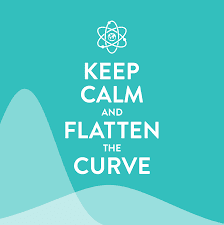Author: Public Linguist
Public Health Needs a New Playbook
Question 1
Question 2
 |
| H1N1 on left Covid Post on Right |
Since we haven’t, nor likely ever will “close the book on infectious diseases” as US surgeon-general William Stewart proclaimed in 1969, I think it’s critical to look at what things must change in the public health communication playbook. A year of Covid has shown me that public health officials and experts, particularly those tasked with communicating with the public, are collectively responsible for benign language disguised as information – the endless dump of scare tactics, mask and social distancing directives, persuasion through repetition and shaming have yielded confusion, mistrust, anger and worse.
Question 3
CPAC Golden Trump Accurately Described as “replica” in NYT
You may not be tuning into the maskless, socially close cult gathering called CPAC. But you have to seen the gold likeness of Donald Trump – in suit jacket, red tie – and now, post election, in American flag shorts and flip flops.
How could you miss it!
There is ample precedent for this large macabre likeness. Off the top of my head- recall the Trump gilded golf cart exhibited at Battery Park 2020.
But what caught my attention was how the NYT pivoted in the language it used to refer to this gold monstrosity.
Today at about 1:45 PM this afternoon I was reading the NYT and saw this picture and this caption.
Note: this gold metal abomination is called a “replica” .
Today online at at 1:55 PM
No sooner that I had time to Instagram the “truth in advertising” I stumbled upon than the caption was magically altered. POOF! “replica” became “statue”.
For one brief moment……Camelot.
mRNA Needs a Better Messenger
Allow me to frame the following critique by quoting what my ex (lovingly) used to say to me:
“You have a problem for every solution”
But, I digress,
Like most health communication people I’ve spent this year thinking about, writing about and re-imaging how we could have done better communicating the Covid pandemic to various “general publics”. I’m part of a large group of people who share what they come across.
Lately I’ve been on the hunt for messaging explaining mRNA and the Covid vaccine.
Friend Diane sent the very cool animated video produced by Johns Hopkins, “How Do mRNA Vaccines Work? Here’s What You Should Know.”
First listen through, driving in my car, I loved it.
But living up to my Ex’s characterization of me – I had to dig deeper, listen a few times more.
Here’s where I think the general public would get hung up, or simply skip over important information need understand and have more trust in the new Covid vaccine:
The video is good for listeners who have some good basic concepts about science – science literacy. (20-30%) of adults in the US. If you’re interested in data on public understanding and perception of science see references below).
NSF’s decades-long Public Understanding of Science surveys consistently show that US adults are not very science attentive or science literate.
Examples -about 50% of US adults incorrectly believe that “antibiotics kill viruses as well as bacteria.” And in another example, roughly 1/2 of adults agree that “the earliest humans lived at the same time as the dinosaurs.
No blame game here. But if we factually know that science likely does not play a central role in millions of people’s identity and interest, if their science literacy is limited, then it is our responsibility to produce information that is understandable, teaches and advances science literacy.
That’s why I listened much more carefully to the Johns Hopkins video. They’re very smart people who know their science, and are committed to producing accurate and trustworthy information.
I’ve listed the “high barrier” messages for your consideration. I think these trouble spots are very fixable with little effort.
Overall – I would have capitalized on “you might have heard…but the fact is that …….They don’t do this until the Question Section.
1. (re mRNA) in development for 20 years
Linguistically/ comprehension wise, something like “Scientists have been working on MRNA for 20 years. They learned a lot about how useful mRNA could be in vaccines.”
2. “Unlike some vaccines…..mRNA vaccines do not contain any pieces of the virus.”
Much more understandable to say something like, “the MRNA vaccine is different from most vaccines that people take. Most vaccines start by taking pieces of the virus…..For example when you take the flu vaccine tiny amounts of the real virus go into your body…..
3. The spike protein…..triggering an immune response.
This science inaccessible to most
Better to say something like, “The body thinks this is a real virus invading and starts protecting and fighting…..”
4. They help our bodies produce antibodies specific to the virus.
Way to high barrier science concept. Need to unpack this. What do antibodies do?
5. ….T cells that also confer immunity.
Silly misstep – “confer” college level word
6 Producing the same immune response that happens in a natural infection, but without actually infecting your body.
Again, good script but not written with the 70-80% of the adults in the US.
If you don’t know what an immune response is ( more or less) you probably are still likely to think that you will get sick from the vaccine.
It’s clearer to say something like “….without actually infecting your body with the Covod virus and making you sick. “ or “But the mRNA vaccine doesn’t GIVE YOU the Covid virus. You do not get Covid from the vaccine.”
Again this comes up in Q section. Would have bring great to say it here and repeat in Q.
My favorite “high barrier” message in the Qs is:
“Affect or interact with your DNA ….their evidence is that the MRNA never actually enters the nucleus of the cell ( less that 20% of adult in US know anything about a cell and / DNA. “
Other than that Mrs. Lincoln, did you like the play?
References – Public attitudes and understanding of science:
National Science Board. Science and Engineering Indicators, 2012. Arlington, VA: National Science Foundation; 2012. Science and technology: Public attitudes and public understanding; pp. 7.1–7.51. Ch. 7.
National Research Council. Trust and Confidence at the Interfaces of the Life Sciences and Society: Does the Public Trust Science? A Workshop Summary. Washington, DC: The National Academies Press; 2015. Board on Life Sciences, Division on Earth and Life Studies; Board on Science Education, Division of Behavioral and Social Sciences and Education. [PubMed]
Bauer MW, Falade BA. Public understanding of science: Survey research around the world. In: Bucchi M, Trench B, editors. Routledge Handbook of Public Communication of Science and Technology. 2nd ed. New York: Routledge; 2014. pp. 140–159.
NYC Daily Positive Covid Test Numbers Among the Missing
Guess what you can’t find on the NYC Covid “Latest Data” site anymore?
Answer: How many New Yorkers tested positive on any given day.
Nope. Gonzo.
“Less pertinent” Mayor DeBlasio said this week as he announced yet another change to the way the city presents Covid data to the public. Reporting the city’s seven-day rolling average positivity is a better measurement, the Mayor claims. As of Monday the average was 4.98%. The city’s marker to take more actions is 5 %.
I’ll humbly leave it to the epi folks to go at it about the pros and cons of accurate data reporting.
I’m interested in and study what happens when you change up the way you present people with the data or indicators, especially when it replaces simpler math with harder math. Raw number with percentage rates, for example.
Think back to when we moved from talking to patients about blood sugar levels and started using A1C. Blood sugar levels vary throughout the day. The hemoglobin A1c number reflects your average blood sugar over the past 2-3 months.
Studies estimate that as few as 25% of people with diabetes can accurately describe the meaning of the hemoglobin A1c value (HbA1c) or recall their most recent value.
Furthermore most patients recognize the name of the test, but less than 50% of patients with diabetes know their A1C level or what their target level is.
But wait, there’s more.
How about when pounds became BMI. Weight is what you see on the scale.
BMI is an estimate of body fat. Health providers and insurance companies changed to these new indicators over a decade ago. But the jury is still out on whether that actually helped patients understand or monitor their health. Fact, a majority of patients do not know their own BMIs and could not recall discussing their BMI with physicians.
So
Dear Mayor,
- Not all change is progress
- It’s always prickly to change data/information that people have gotten used to checking out;
- And it’s really never a good idea to not repeatedly explain what you’re changing and why. And to do it in ways average people can understand, accept, trust and USE.
Indicators are meant to help us understand what’s going on, to accumulate information to get a lay of the land and what that means for us.
At the very least there should be a big, loud SHOUT OUT. (I’m sure you can come up with your own shout out. Here’s a quick stab at one).
Notice Anything Different?
We’re not showing you how many people tested positive everyday. The reason is that more and more people are getting tested (that’s a good thing!). That number is getting bigger all the time. Big numbers can tell us more if we talk about what percentage (%) that number is. We know that if the number of positive tested people goes to 5% we are in a danger zone again. We must take action to slow the virus spread down.
Right now you can see that 3.9% of all New Yorkers who got Covid tested were positive.
When we look at the percentage every 7 days we can get a clearer picture of the trend ( the direction we are headed). So keep your eye on the 7 day trend.
Has health communication lost its Mojo?
It’s probably like, if you’ve been married with kids, and dogs and houses for 30 years and you find out your spouse has a second, parallel family somewhere.
Or your crowd pleasing lemon cake stops reliably rising the way it always has.
Maybe more like a winning backhand shot that now keeps getting tangled up in the net.
For me that’s what being a “recognized health communications expert” of 30+ years feels like in this time of Covid.
This past summer a department of health contacted me wanting to know if I had any recommendations for “simplifying” the mask message. Make it clear to people why masks were important. One online communications group urged professionals to drop the word, “transmission” – too complicated a word that would trip up the public. Another physician wondered if we needed to explain lung anatomy to the public so they’d understand the risk of going without a mask. “Anatomy?” I replied. I couldn’t help myself. “Remember the old med school saying – “When you hear hoof beats think horses, not zebras!”
Our conversation with the department of health ended there.
If we scratch the surface of this non-mask wearing, conspiracy promoting segment of the population we find some very interesting facts ( like with evidence) that should have been factored in at the very start when public health communicators were sending out health information about Covid 19.
Here’s my short list of horses:
1. Science Literacy Decades of research shows that less than 1/3 of the population is science literate. Less than 25% understand what it means to study something using the scientific method. So most people don’t understand that science is dynamic – science knowledge changes, sometimes quickly and therefore recommendations change. The changing calculus of this pandemic is being scratched out in chalk marks, easily erased and rewritten.
Should we wear face masks? Who do masks protect? How does social distancing really work? How many feet apart? Does having antibodies mean we are immune to COVID? The changing answers to these questions don’t mean expert recommendations are as iffy as playing pin the tail on the donkey or playing a game of darts blind-folded (does anyone really do that!).
2. Trust in science It waivers greatly in the US. For the reasons above but also because most often there is a disconnect between how scientists say what they know, and how most of us take in the information. For example, early in the pandemic during the White House Briefings Dr. Birx says: [We want to have a test] that is efficient. To let people know who has been positive or immunity. That is critical to epidemiologists and public officials, to know what the penetrance of a virus was in a community when all you’re seeing is the serious cases and testing the most symptomatic. (Briefing, 4/10/20). Accurate science. Way over my head.
3. Politicizing Public Health You didn’t have to be super-prescient last March to understand that Pres. Trump was going to make this “China Virus” a political issue. And he certainly didn’t disappoint. Dismissing the numbers, discrediting his own scientists, touting unproven (and ludicrous) remedies, privileging hearsay and conspiracy theories. The perfect brew to give millions ( guesstimates anywhere from 8% – 33%) permission to not wear face masks, poo-poo the dangers of the virus and cloak themselves in a convenient patriotism – “my right as an American” to go facial commando. Congresswoman-elect Marjorie Greene (of Q Anon fame) declared last week – “My body, my choice. #FreeYourFace.”
So where does all this leave an aging public health communicator? What stuff in my toolbox gets salvaged and what jettisoned?
Not just once over these past months I’ve thought back to the Anthrax attacks in 2001 when, right after the terrorist attacks on the World Trade Center and the Pentagon in 2001, envelopes containing deadly anthrax spores were being sent in the mail. I recall being in Washington DC for a public health conference during that time and one DC public health official said to the audience, “Sometimes I just want everyone to move 5 feet to the right.” He was referring to the critical importance in such emergencies of having everyone listening and following expert directions to stay safe. And for the most part people around the country did. We were frightened and this was a dreaded disease. Brilliant me. I had been microwaving my mail thinking that would kill spores. I stopped cold as soon as the public health message came out – DO NOT MICROWAVE YOUR MAIL. I didn’t need any reason, any elaborate information. I just stopped.
We missed the boat with the Covid pandemic. We’re still struggling with messages that no longer can work.
How will we communicate the vaccine?
Health Literacy’s preoccupation with “Can’t Do This”.
A main theme in my writing and teaching (my students would say “her mantra”) – is that a majority of researchers and practitioners in the field of health literacy have spent more than a quarter century identifying what people CAN’T DO. Tests and metrics of all kinds have been designed and popularized so that we can:
- count how many blanks are left on a cloze reading test;
- enumerate what health words a patient can’t read,
- identify what prescription directions they misinterpret; or
- how many calories per serving they miscalculate.
And yet, the last quarter century has seen a creative explosion in human psychology, cognitive science, linguistics and anthropology, technology use.
But the field of health literacy holds tight to the deficit model – starting with what people CAN’T DO. It seems to have very little new to say about what real people are capable of, what they negotiate and get done in their lives every day. Or at least that’s not getting published and promoted. We’re still into hashing out the terms “limited” vs “low” health literacy, or should it be “inadequate” or “restricted”!
Starting with what people CAN’T Do is the hallmark of a top-down model – whether it’s in education, community development, therapy or ball room dancing lessons!
Why do we focus on setting the bar at “how many calories are in a serving of ice cream?” when people are finding their way around cities, reading no-parking signs, checking out the CVS Buy 1 Get 1 Free Ads, talking about religion, politics, Covid, war and peace, life and death.
Lost, if not aggressively fracked away, is the appreciation and use of people’s knowledge, skills and meaning making, their gifts, their own personal talents, accomplishments and aspirations. To what end?
What would it take for this deficit model to go extinct?
In an exquisitely sensible Ted Talk, Cormac Russell, talks about Asset Based Community Development and says, “If we want to help people in a way that does no harm to them, their capacities and their communities, then the best place to start is with what is strong within them and within their communities.” (ASSET BASED MODELS)
I think so much of the asset based model is timely the field of health literacy. It could switch out the lens through which we see real people and allow “health literacy” to be a rich capacity.
It’s time for a little “wokeness” in health literacy
This week, there’s a very triggering conversation I’m following on a popular health literacy discussion list.
People are talking about how best to refer to “people with low health literacy.”
Take your pick – there are posts from all sides
“Low” is too judgmental.
How about “restricted”?
Why not “needs help reading”?
“Inadequate” …
One of my problems with calling anyone or any group “limited” or “low” or “inadequate’ or even “adequate” is that they all assume a few things I don’t hold dear.
Are you sure….
1. that the “standards” used for judging who is and who is not “limited” are standards based on the best known science and theory – can we really say this about the TOFHLA and New Vital Signs?
2. that the standards are not set from an elitist, privileged perspective – dare I say that everyone judging limited or low health literacy fits into this category, including me.
3. that the “labelling” of someone does not in some way stygmatize them – would you like to be labeled that way
4. that we, good people one and all, are not perpetuating a dominant culture model that needs us to broaden the lens through which we look at one’s understanding of health / science and requires of us a dose of mutual respect and humility.
For myself, I’ve answered these questions, and I come up lacking.
So says a woman living in the time huge social change, still learning.







































